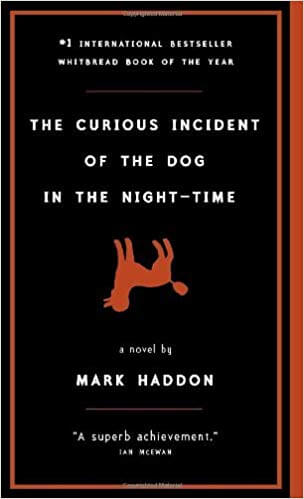- The Meaning of Critical Thinking: A Key Skill for Navigating Today’s Information Landscape - November 3, 2025
- Grandparents Can Develop Activist Grandchildren - September 29, 2025
- Top Six Reasons Credit Union Benefits Are a Smart Choice Over Banks - August 18, 2025
Last Updated on October 1, 2025
The marginalized community created the hashtag #OwnVoices for books written by authors who share a marginalized identity with the protagonist. Marginalized communities also use the hashtag to highlight the need to hear directly about their experiences from them. In this post, I examine the issue of an author writing outside their primary identity, as seen in Mark Haddon’s The Curious Incident of the Dog in the Night-Time.
What is a Sensitivity Reader?
Sensitivity readers review manuscripts for authenticity to ensure they accurately portray characters with marginalized identities. They help authors write more nuanced characters and avoid bias and stereotypes.
In Did Harper Lee need a Sensitivity Reader? I discuss one of my favorite books, To Kill a Mockingbird. (You’ll have to read the post to see if my answer is yes or no.)
Author sensitivity is essential if the character you are writing is outside of your identity. For example, a neurotypical author writing about an autistic person.
In this post, I examine the issue of an author writing outside their primary identity, as seen in Mark Haddon’s The Curious Incident of the Dog in the Night-Time.
About Mark Haddon’s The Curious Incident of the Dog in the Night-Time

It is a mystery narrated from the perspective of someone who takes people’s words literally, struggles to adopt other people’s perspectives, and is overly detail-oriented. The book has won numerous awards, and schools often include it on reading lists.
Reactions from The #OwnVoices Community
On Amazon, among the thousands of positive reviews for Haddon’s book, you’ll find numerous one-star reviews. Many are from Autistic people.
[Read about another marginalized community in Listen to Trans People When They Speak Their Truth.]
Here are a few reviews, in their #ownvoices.
Setting Bad Expectations
“Readers who see an autistic person being mistreated are less likely to stand up for them if they believe they won’t even notice it. By showing him being treated badly by multiple people he meets in public, Haddon sets the expectation that this kind of treatment is universal, inevitable, and normative. These interactions could have been used to show non-autistic characters modeling effective support skills but were not.”
Stereotyping
“…Now people who actually have an ASD are being stereotyped against this odious example of what autism “is.” And then they wonder why they’re shocked when the real people with ASD bear no resemblance to this novel or why people with autism think this novel is a disgrace to humanity. My own father was one of the people surprised when I told him I regarded this book as disgusting and why he kept saying he thought he knew what was going on in my head just because he read one novel.”
Perpetuating Misunderstanding of Autism
“Since I have been diagnosed with Asperger Syndrome, let me just say that Mark Haddon should spend some time interacting with individuals who have Asperger Syndrome. The character he has created is not an Aspie; it is a sick coagulation of characteristics that span the broad range of autism all thrown together and labeled by him as “Asperger” because he needs his character to be gifted enough to write a book. It is this kind of trash that makes life for people with Asperger so difficult, and increases the misunderstanding that society has for us. If you really want to understand how a person with Asperger thinks and feels then talk to one of us.”
Let’s hear about autistic people in their own voices
I’m not sure sensitivity readers existed when Hadden published the book in 2003. But I suspect he would not have used one. Haddon, who is neurotypical (not on the spectrum), admits he did not research autism or Asperger’s syndrome. Instead, he says,
Imagination always trumps research. I thought that if I could make Christopher real to me then he’d be real to readers…judging by the reaction, it seems to have worked. – Mark Hadden
I think by worked Hadden means sold a lot of books. Because, based on the autism community’s critique, he did not create a ‘real’ autistic character.
Instead, let’s hear from autistic people in their own voices. Goodreads has a list of books by people who are actually autistic. #OwnVoices
What do you think about this controversial issue?
[Start your activism journey today. Buy my book.]
READ NEXT
In “Listen to Trans People When They Speak Their Truth,” I discuss the UU World article that sparked controversy and first brought my attention to the concept of sensitivity readers.
Why are Sensitivity Readers So Controversial?
From editor Trish Lockard:
Sensitivity Readers: An Editing Specialty Comes of Age
Sensitivity Readers Are Not Censors
Writing is powerful. Browse more examples of artistic activism.




I have “The Curious Incident of the Dog in the Night-time” and I first read it before my son was diagnosed as being autistic (Aspergers). As anyone can tell you, when you meet a person who’s autistic, you have met ONE person who’s autistic. Since Haddon had worked with autistic youngsters he obviously had a lot to go on. Would having a sensitivity reader made the book better? I don’t know. I look at fictional accounts as just that – they are fictional and not autobiographical. And on my original first release copy, the jacket never indicates that Christopher is autistic in any way. It is something left up to the reader. Perhaps that information was added on later copies or in other countries when people recognized ASD tendencies with the main character. I give credit to this book for helping my son recognize his own behaviors, and it was through reading this book that he was able to ask for help with dealing with things he felt he had no control over and didn’t know why at the time. As with movies, tv shows, and the like, my son and I enjoy seeing different perspectives from the ASD community – whether they resonate with him directly or not. He looks at them as one possible way someone like him sees and reacts to the world. It’s through these artistic expressions (both fictional and non-fictional) that my son has learned to accept himself and understand ASD better. And for that I’m grateful.